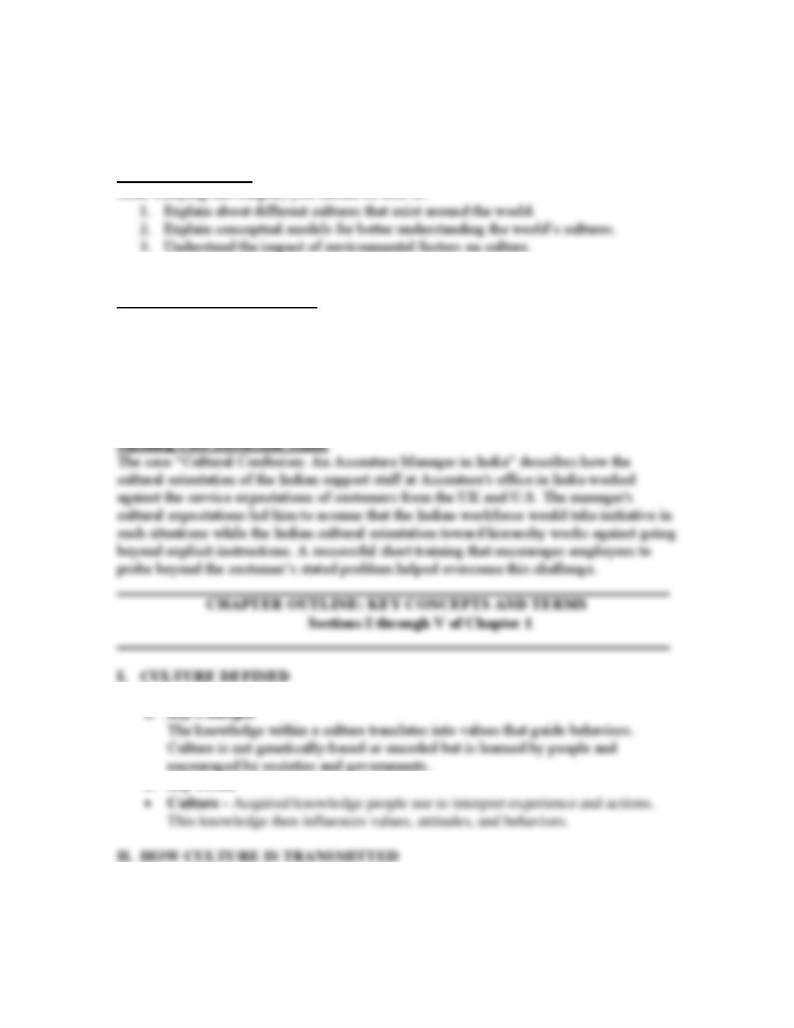
INTERNATIONAL MANAGEMENT Chapter 2: Culture and International Management
9
Chapter 2
CULTURE AND INTERNATIONAL MANAGEMENT
Learning Objectives
4. Identify distinctive management styles that exist in different countries.
General Teaching Suggestions
Provide an overview of the current scenario of global trade. Encourage discussion on the
cultural challenges an international marketer could face in such a scenario. Citing
relevant examples from global trade, encourage students to discuss the various strategies
one should adopt in a multicultural environment. Suggested activities: Divide the class
into groups and have them identify the major cultural challenges in different parts of the
world.
2. Key Terms
1. Key Concepts

INTERNATIONAL MANAGEMENT Chapter 2: Culture and International Management
10
1. Key Concepts
Culture can affect all aspects of the management of a firm including, but not
limited to, strategy, hiring, pay/promotion, organization, and evaluation of
performance.
2. Key Terms
• Face - Respect of a person’s peers; avoiding embarrassment.
• Parochialism - Belief that there is no other way of doing things except what is
done in one’s own culture.
• Ethnocentrism - The ethnocentric view of culture holds that an individual or a
firm will believe that their own way of doing things is the best, and will not seek
to adapt to local cultural practices.
1. Key Concepts:
• Sociology Framework: Kluckhohn and Strodtbeck developed a framework called
dimensions of value orientation. This framework examines six dimensions, four
of which are especially helpful to international managers in understanding
important values of different cultures.
i. Time orientation
ii. Space orientation
iii. Activity orientation
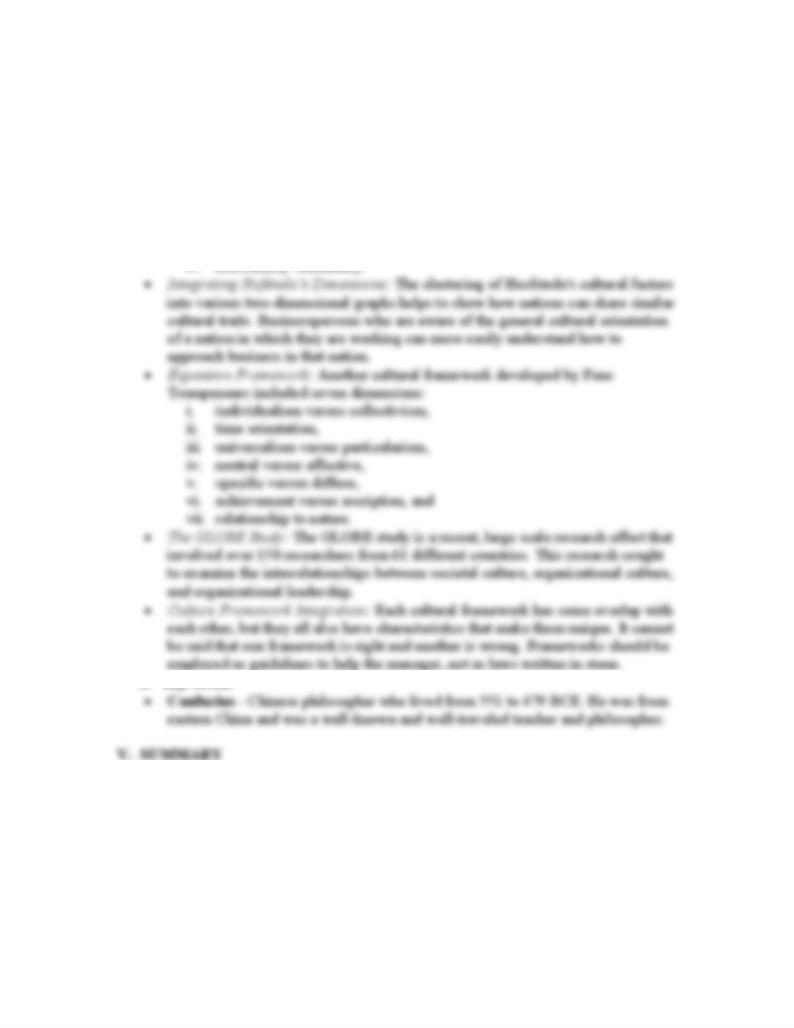
INTERNATIONAL MANAGEMENT Chapter 2: Culture and International Management
11
iv. Relationships among people
v. Relations to nature
vi. Basic human nature
• Psychological Framework: Another valuable cultural framework was created by
organizational psychologist Geert Hofstede who identified four dimensions along
which cultures can be distinguished:
i. power distance
ii. individualism-collectivism
iii. uncertainty avoidance, and
iv. masculinity–femininity.
2. Key Terms
1. Key Concepts:
• Four major frameworks can be used to help one understand cultural settings.
• These frameworks (Kluckhohn and Strodtbeck, Hofstede, Trompenaars, and
GLOBE) each approach the domain of culture slightly differently, but they all
have the potential to help a businessperson clearly understand the environment in
which they are operating.
• The related concept of values is also important to the international operation of a
business.
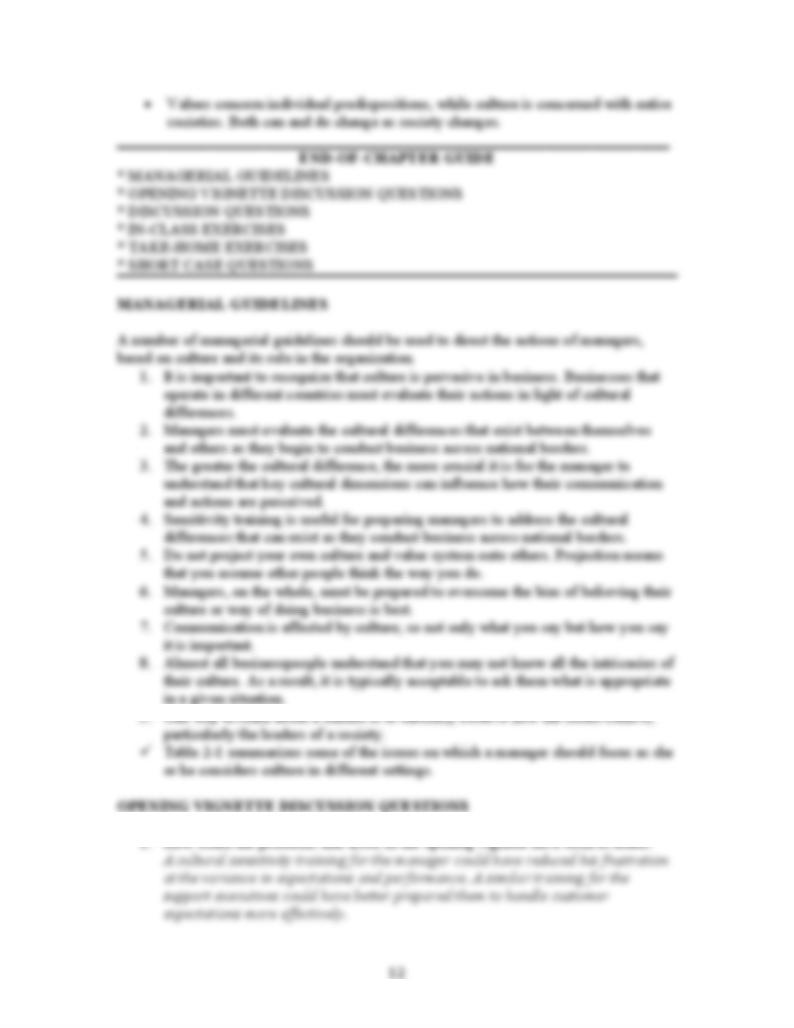
INTERNATIONAL MANAGEMENT Chapter 2: Culture and International Management
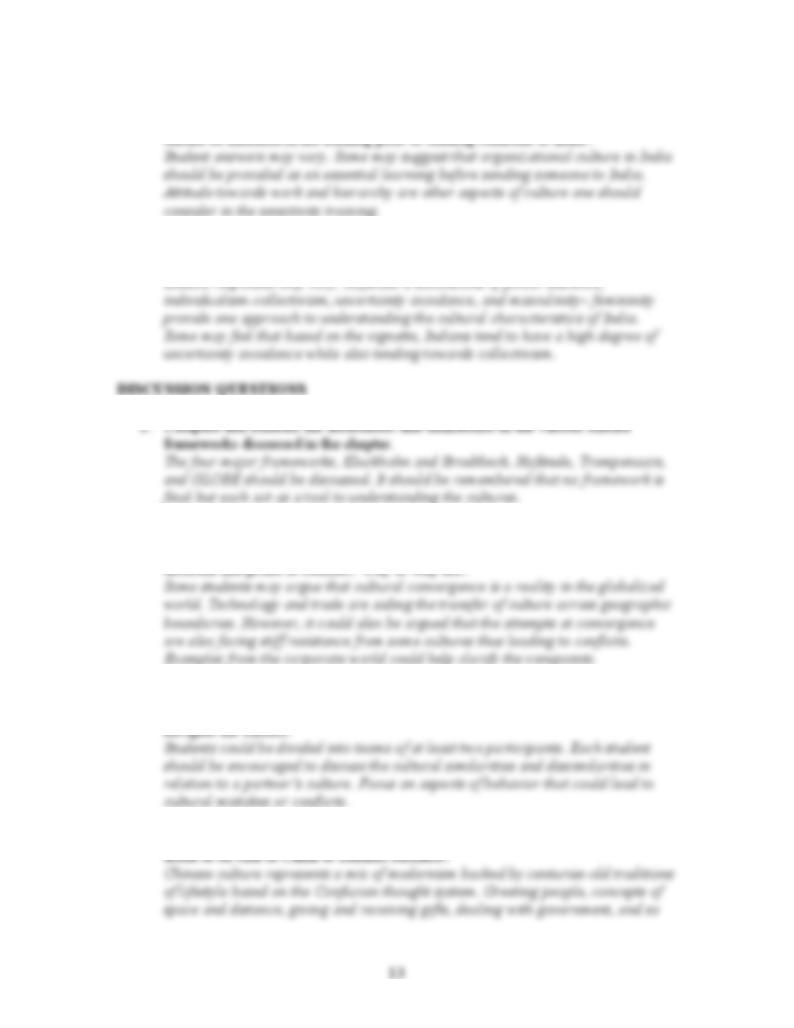
INTERNATIONAL MANAGEMENT Chapter 2: Culture and International Management
2. If you were in charge of sensitivity training for Accenture, what do you think
3. Based on the vignette, discuss what the cultural characteristics of India, using the
Hofstede model to describe these characteristics.
2. Is cultural convergence occurring in the world? That is, do you think that the
various world cultures are coming closer together, or are they getting more
3. If you were going to conduct cultural-sensitivity training for someone coming to
your country, what do you think they would need to know to successfully
4. What would be a common list of issues you should be taught about, if you were

INTERNATIONAL MANAGEMENT Chapter 2: Culture and International Management
14
1. Your Mexican executive is upset at her Taiwanese colleague's refusal to accept
her invitation for a dinner and a chance to go the annual festival in Mexico City.
Your attempts to negotiate an understanding between the two do not produce any
positive impact. How would you handle the situation to smooth things out within
the team?
3. Compare your answers given in Exercise A with those in Exercise B (both i and
ii). Did you prepare Raymond for the problems that came up in Exercise B?
Knowing about these problems, how could you have better prepared Raymond, as
asked in Exercise A?
1. Go to the Web site http://www.executiveplanet.com and select two different
3. In your view, how do foreign nationals misunderstand your country? Make a list
of the most important of these. Are they cultural in nature? Historical? Political?
Other? What types of training could a firm pursue to overcome these
4. In 2005, a number of Chinese firms sought to buy U.S. firms. This includes the
China National Offshore Oil Corporation purchase of Chevron, the Lenovo
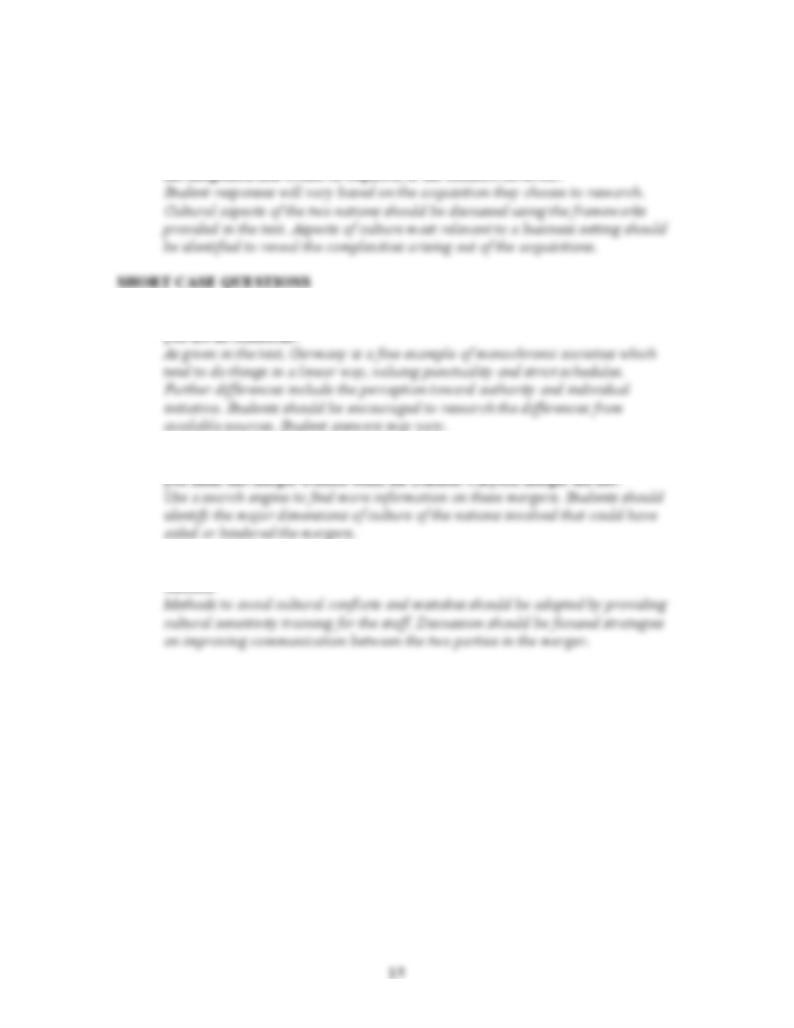
INTERNATIONAL MANAGEMENT Chapter 2: Culture and International Management
purchase of IBM’s laptop business, and Haier’s purchase of Maytag. Research
one of these proposed acquisitions. Which ones were completed? What would be
the cultural implications of each of the proposed acquisitions? In other words,
would some of the mergers be expected to be more difficult because the nature of
1. What are some of the major differences you see in doing business in Germany if
2. Renault Motors is a French firm that owns Nissan Automobile of Japan. Why do
3. Think of ways that the Daimler Chrysler merger could have been encouraged to